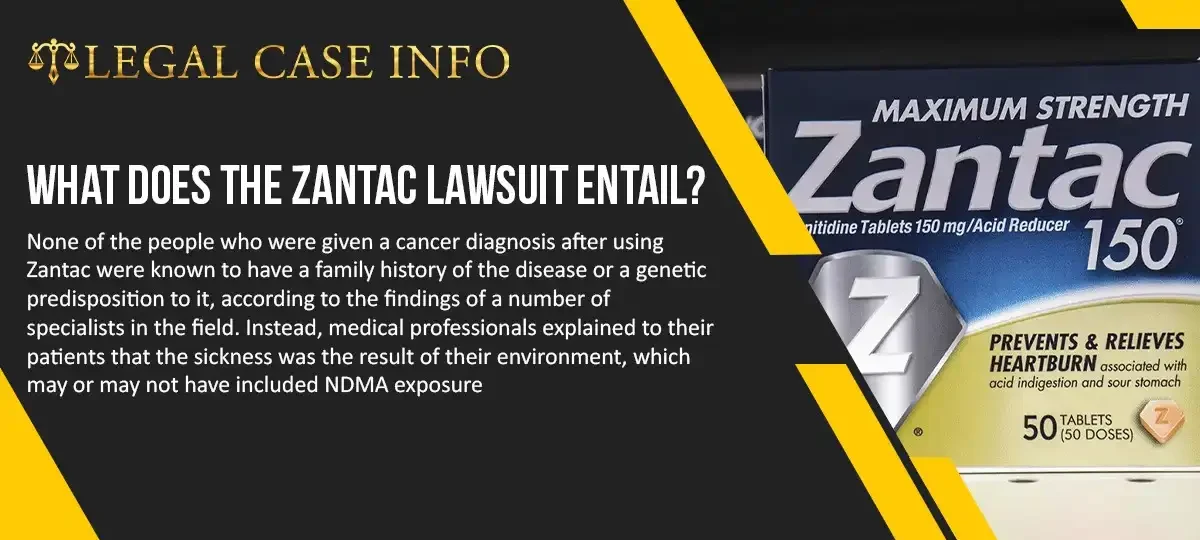None of the people who were given a cancer diagnosis after using Zantac were known to have a family history of the disease or a genetic predisposition to it, according to the findings of a number of specialists in the field. Instead, medical professionals explained to their patients that the sickness was the result of their environment, which may or may not have included NDMA exposure.
WHAT EXACTLY IS ZANTAC, ANYWAY?
Zantac, also known as ranitidine, is a medication that belongs to the H2RA subclass. These medications reduce the amount of acid that is produced by the stomach. Before this point, medical personnel treated patients suffering from the following conditions using Zantac:
- Excessive Fluid Loss From the Body
- The disease known as gastroesophageal reflux disease (GERD)
- Ulcers of the duodenum, which are found in the first section of the small intestine and
- Stomach Ulcers
ZANTAC: CAN IT CAUSE CANCER IN PEOPLE?
There is no longer a ranitidine-based Zantac product available for purchase in the United States. This page only contains information about the side effects of Zantac manufactured with ranitidine; the new Zantac 360 created by Sanofi with famotidine is unaffected by the market removal and does not have any of these side effects.
In clinical trials, the researchers from France showed that the rate of side effects linked with Zantac was extremely comparable to that of patients who took a placebo, also known as an inactive drug. The researchers published their findings in a publication from the United States.
ZANTAC AND THE ROOTS OF ITS RELATIONSHIP TO CANCER
Concerns about Zantac’s possible connection to cancer stem from ranitidine’s ability to produce NDMA, which raises the possibility of a link between the two properties. A number of studies conducted in the 1980s brought up the possibility of a link between the substance in question and the manufacture of NDMA.
In 1983, two Italian medical experts made the discovery that there may be a link between ranitidine, the chemical name for Zantac, and the cancer-causing drug NDMA. Zantac has an ingredient called “DMA” (dimethylamine), which, when combined with the “N” found in many widely eaten foods, can cause the formation of nitrosamines, nitrites, and nitrates. Although Zantac is always used with food, early researchers were actually of the opinion that this shouldn’t be done and they advised against it.
WHAT IS YOUR RISK FACTOR FOR DEVELOPING CANCER?
Because there is now only minimal evidence that the NDMA in ranitidine leads to cancer, researchers have not been able to determine a precise risk level for the compound.
It has been claimed that researchers at the Memorial Sloan Kettering Cancer Center have discovered an increased risk in the likelihood of acquiring specific types of tumours.
WHAT IS AT THE HEART OF THE CLASS ACTION LAWSUIT FILED AGAINST ZANTAC?
People who took ranitidine-containing Zantac and later developed cancer brought ranitidine lawsuits when the manufacturers of ranitidine and Zantac issued recalls owing to the potential risk of cancer. According to the Food and Drug Administration (FDA), ranitidine, the primary component of Zantac, contains N-nitrosodimethylamine (NDMA), which has the potential to cause cancer in humans.
The Food and Drug Administration (FDA) has advised all relevant manufacturers that ranitidine-based Zantac sales in the United States will be terminated in April 2020 due to the possibility of NDMA contamination. The quantity of NDMA that is found in a drug grows the longer it is maintained on the market; however, the FDA is unsure of how long Zantac has included NDMA in its formulation. The new drug from Sanofi containing famotidine called Zantac 360 is not included in the recalls or legal actions being taken against the company.
WHAT’S AFTER BEING DIAGNOSED WITH CANCER
If you have a history of taking ranitidine and have been diagnosed with cancer after taking Zantac, you should discuss this with your primary care physician. They might use it to develop a diagnosis for you and some possible courses of treatment after that.
Keep all of your medical records and the notes that your doctor has given you. It is possible that you could be entitled to launch a case against Zantac if the prerequisites are met.
HOW DO YOU CHECK TO SEE IF YOU ARE ELIGIBLE FOR THE ZANTAC LAWSUIT?
According to the assertions made by attorneys representing Zantac, in order to be qualified for legal action, a person must have a history of using Zantac, have been diagnosed with cancer, and have a link between their cancer diagnosis and Zantac use. Users using the brand-name version of Zantac are the only ones permitted to bring claims, as the ranitidine available over-the-counter is no longer protected by this policy.
A claim can only be evaluated effectively by a legal professional, who can also offer assistance in gathering medical documents and other evidence to bolster a client’s case.
In the event that you are diagnosed with Zantac Cancer, the Following Health Concerns May Arise:
- People who have taken Zantac and have been diagnosed with cancer are given tests to see if they have Crohn’s disease and primary pulmonary hypertension (PPH)
- Primary pulmonary hypertension, also known simply as PPH, is an extremely uncommon lung illness that causes an elevation in the blood pressure found in the lungs. When the blood capillaries in the lungs become more constricted, the pressure in the pulmonary artery rises to levels that are higher than normal.
- Crohn’s disease is an example of an inflammatory bowel disease (IBD). It causes inflammation of the digestive tract, which leads to severe diarrhoea, cramps, stomach pain, and weight loss. This condition is known as irritable bowel syndrome.
Get in touch with legalcaseinfo to receive additional information and to go over your available choices. Contact us as soon as possible to request a free review of your case and for additional information regarding your available choices.

